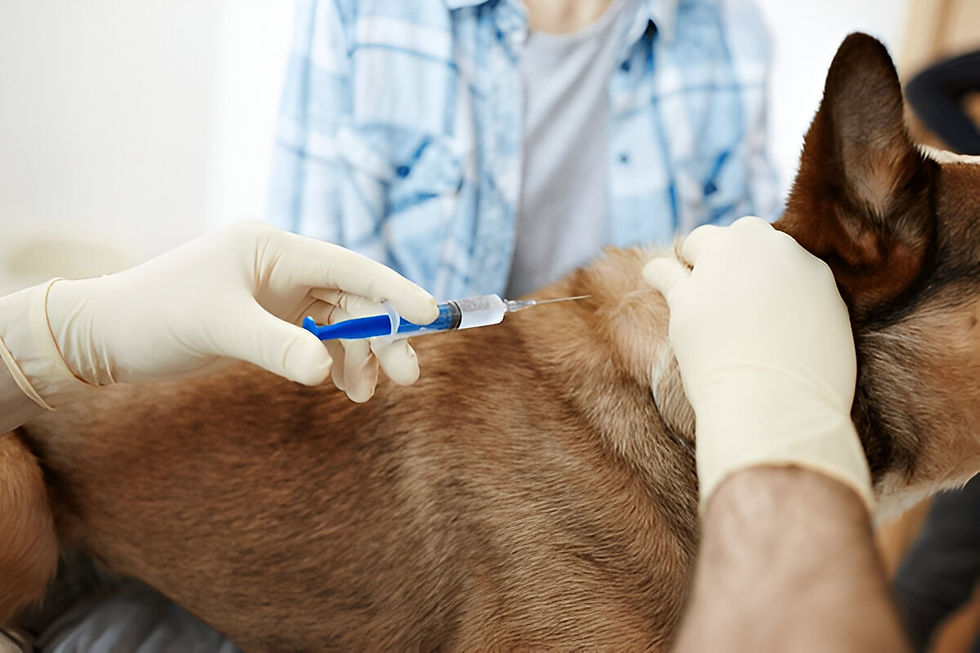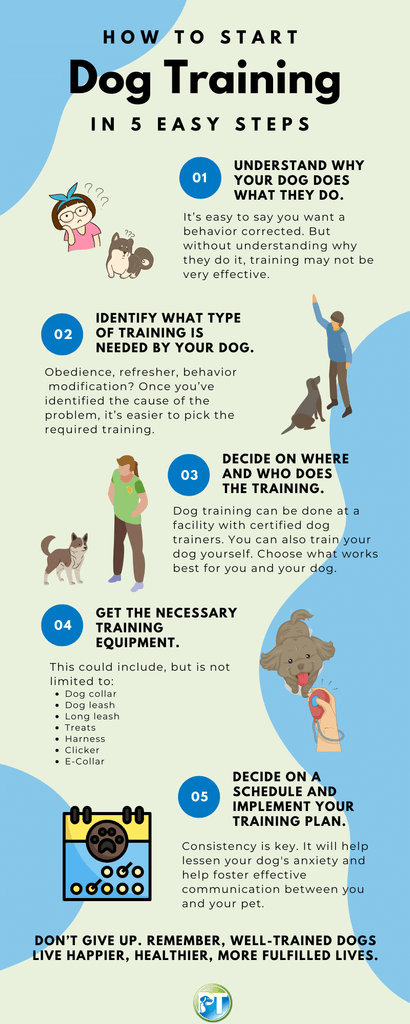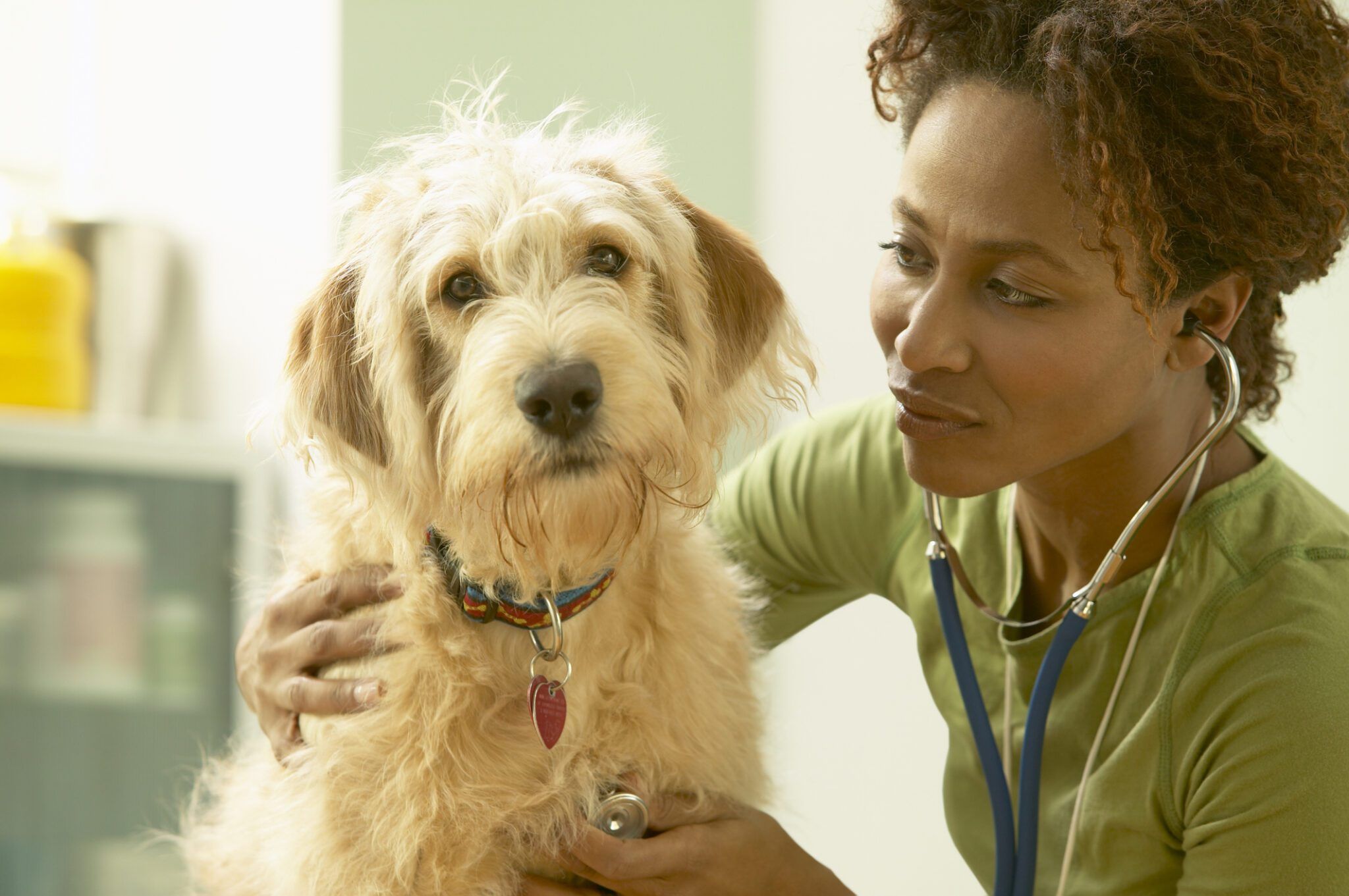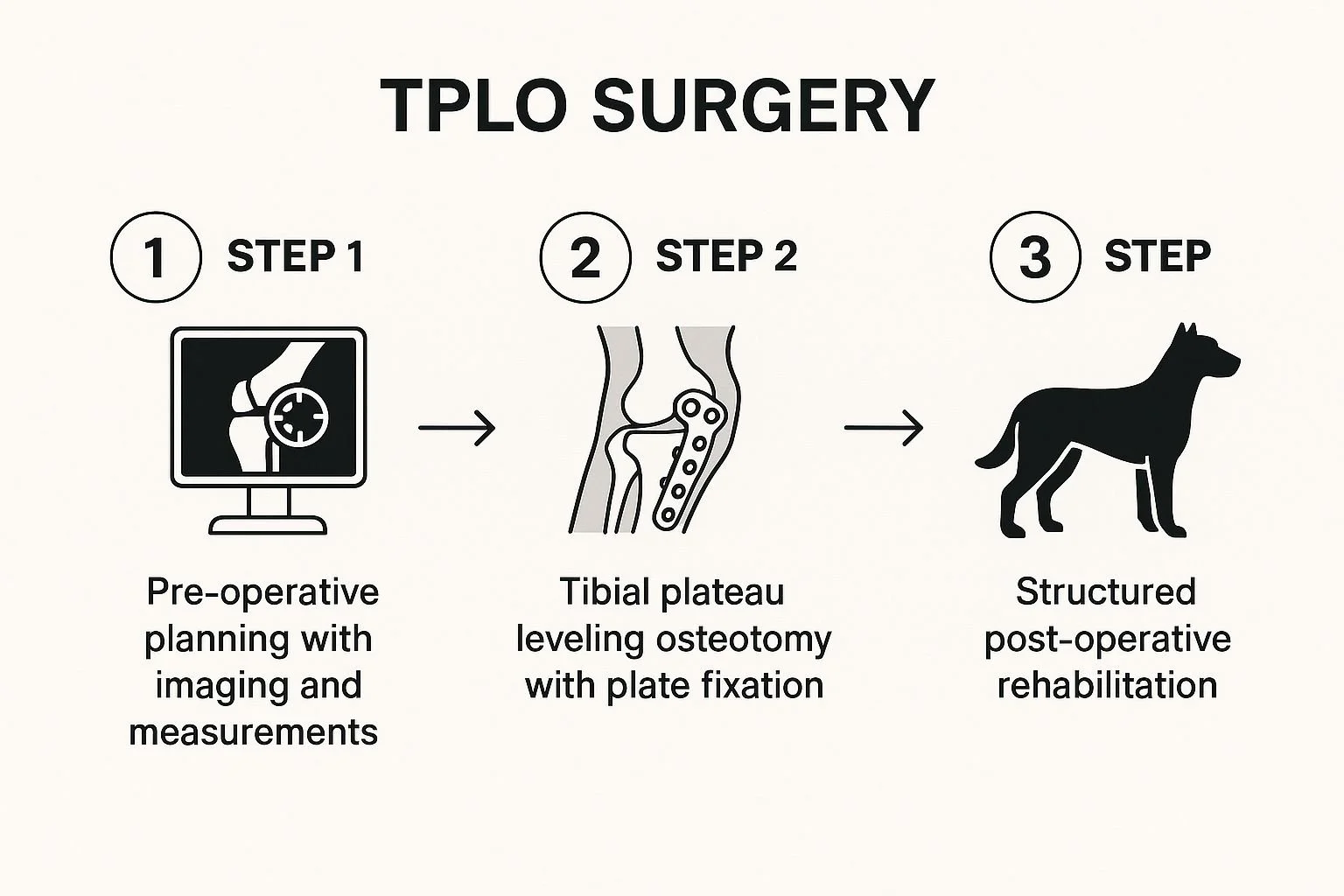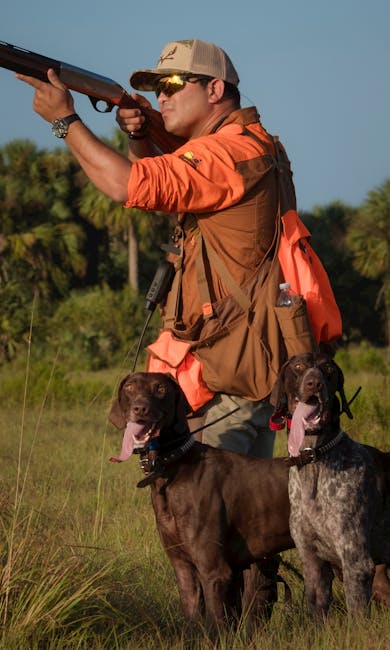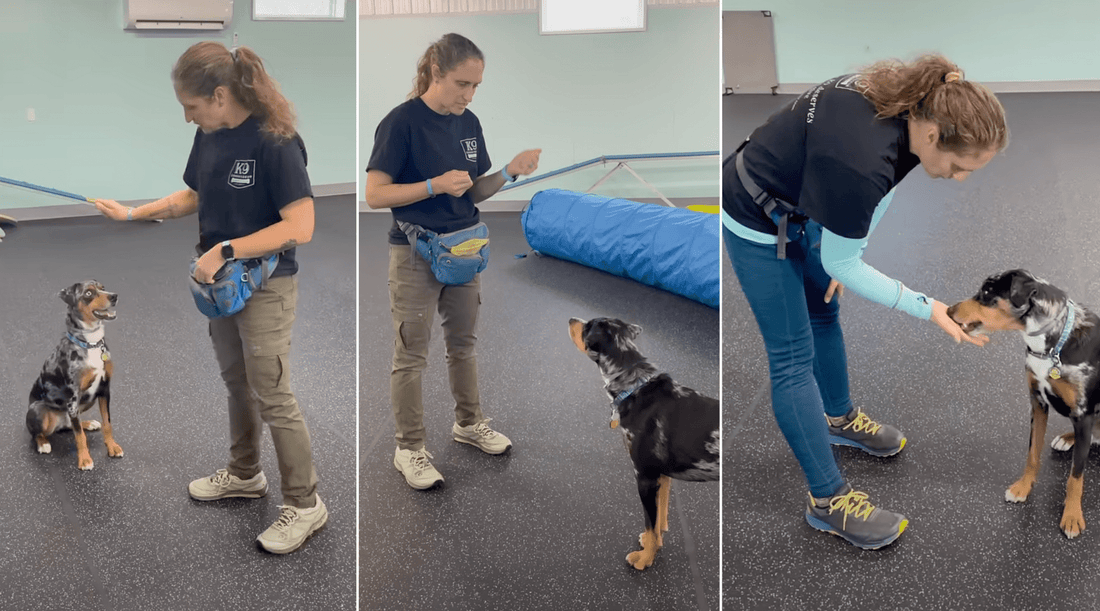Training your dog to be obedient at home might seem challenging, but it doesn’t have to be. Imagine having a well-behaved dog who listens to you, follows commands, and makes your daily life easier and more enjoyable.
You can achieve this with simple, clear steps that fit right into your routine. Whether your dog is a playful puppy or an older friend, this guide will help you build a strong bond while teaching essential obedience skills. Keep reading, and discover how you can start training your dog today with confidence and ease.
Benefits Of Obedience Training
Obedience training offers more than just a well-behaved dog. It builds a foundation for a strong, trusting relationship between you and your pet. The benefits you gain go beyond simple commands—they touch on safety, communication, and your dog’s happiness.
Improved Safety For Your Dog And Others
Training your dog to respond to commands like “stay,” “come,” or “leave it” can prevent accidents. Imagine your dog running into a busy street—obedience training can be the difference between harm and safety.
It also helps control your dog’s behavior around other animals and people, reducing the risk of unwanted bites or aggressive encounters.
Stronger Bond And Better Communication
When your dog understands what you expect, frustration fades for both of you. Training sessions create moments of connection and trust.
You learn to read your dog’s signals better, and your dog learns to listen and respond. Have you noticed how your dog seems happier when it knows what to do?
Reduced Behavioral Problems
Untrained dogs often develop habits like excessive barking, chewing, or jumping. Obedience training channels their energy into positive behaviors.
By teaching clear rules, you help your dog feel secure and less anxious. This makes life more enjoyable for both of you.
Enhanced Mental Stimulation
Training challenges your dog’s brain. Learning new commands and tricks keeps their mind sharp and engaged.
Dogs that lack mental stimulation can become bored and destructive. Can you imagine how much happier your dog will be with regular training sessions?
Convenience In Daily Life
Imagine walking your dog without constantly worrying about pulling or disobedience. Obedience training makes daily activities smoother and more enjoyable.
You’ll find it easier to manage your dog in public places, vet visits, or around guests. This convenience reduces stress for both you and your pet.
Choosing The Right Training Tools
Choosing the right training tools helps make dog obedience training easier. Good tools support clear communication between you and your dog. The right items keep your dog focused and motivated. They also ensure safety during training sessions.
Use tools that fit your dog’s size and temperament. Avoid items that cause discomfort or fear. Training becomes more effective when your dog feels secure and happy.
Essential Training Equipment For Beginners
- Flat collar – simple and comfortable for everyday use
- Leash – keeps your dog close and under control
- Treat pouch – holds small rewards for quick access
- Clicker – marks good behavior with a clear sound
- Soft training mat – helps your dog learn “place” commands
Choosing The Best Collar Or Harness
Pick collars that suit your dog’s breed and size. Harnesses are great for dogs that pull or have neck issues. Avoid choke or prong collars for gentle training. A well-fitted collar or harness prevents injury and discomfort.
Using Treats And Rewards Effectively
Small, soft treats work best for fast training. Use high-value treats to keep your dog interested. Reward immediately after good behavior to create a strong link. Change treats occasionally to maintain your dog’s excitement.
Creating A Positive Environment
Creating a positive environment is key to successful obedience training at home. Your dog’s attitude toward learning depends heavily on the atmosphere you provide. A calm, encouraging space helps your dog feel safe and eager to respond.
Setting Up A Calm Training Space
Choose a quiet area free from distractions like loud noises or other pets. This helps your dog focus better on your commands. I once trained my dog in a busy living room, and progress was slow until I moved to a quieter corner. The change made a big difference.
Make sure the space is comfortable with soft flooring or a mat. Your dog will associate the spot with positive experiences, making training sessions something to look forward to.
Using Positive Reinforcement
Reward good behavior immediately with treats, praise, or affection. Timing is crucial—your dog needs to connect the reward with the action. I noticed my dog learned faster when I used small, tasty treats and enthusiastic praise right after the command was followed.
What types of rewards does your dog respond to best? Experiment with different treats and praise to find what motivates your furry friend most.
Maintaining Consistency And Patience
Consistency in commands and routine helps your dog understand what you expect. Use the same words and gestures every time to avoid confusion. Training sessions should be short but frequent to keep your dog engaged without overwhelming them.
Remember, patience is essential. Dogs don’t learn obedience overnight, and frustration can create a negative environment. How do you stay patient when your dog doesn’t get it right away?
Encouraging A Positive Mindset
Stay upbeat and calm during training to set the tone for your dog. Dogs can sense your mood, so your confidence encourages theirs. I find that smiling and speaking in a friendly voice makes a huge difference in how my dog reacts.
Try to end every session on a high note, even if progress is slow. This helps your dog associate training with positive experiences rather than stress or punishment.
Establishing Basic Commands
Teaching your dog basic commands lays the foundation for good behavior and a strong bond between you two. These commands help your dog understand what you expect and keep them safe in different situations. Starting with simple commands like sit, stay, and come builds your dog’s confidence and makes training easier as you progress.
Sit Command
Begin by holding a treat close to your dog’s nose. Slowly move your hand upward, causing their head to follow the treat and their bottom to lower naturally into a sitting position.
Once your dog sits, say “Sit” clearly and immediately give the treat along with praise. Repeat this several times in short sessions, always rewarding the correct behavior.
Have you noticed how dogs quickly pick up on the word when paired with a gesture? Try adding a hand signal like an open palm facing up for clearer communication.
Stay Command
Start by asking your dog to sit. Open your palm toward them and say “Stay” firmly. Take one step back, then return and reward if they hold their position.
Gradually increase the distance and time before giving the treat. Keep sessions short to avoid frustration, and always stay calm and patient.
What if your dog breaks the stay? Simply reset and try again. Consistency over punishment helps your dog understand the command better.
Come Command
Use a leash or a safe enclosed area for this command. Crouch down and say “Come” in an excited tone, gently pulling the leash toward you if needed.
When your dog comes to you, reward immediately with treats and affection. This positive reinforcement makes coming to you a rewarding experience.
If your dog doesn’t respond right away, avoid chasing them, which can turn into a game. Instead, try calling their name softly and rewarding any movement toward you.
Utilizing Positive Reinforcement
Positive reinforcement is the key to effective obedience training at home. It builds trust between you and your dog, making learning a fun and rewarding experience for both of you. When you reward good behavior, your dog naturally wants to repeat it.
What Is Positive Reinforcement?
Positive reinforcement means giving your dog something they like immediately after they do the right thing. This could be a treat, praise, or a favorite toy. The goal is to help your dog connect the behavior with the reward.
Choosing The Right Rewards
Not all rewards work the same for every dog. Observe what excites your dog the most—whether it’s a crunchy treat, a quick game, or verbal praise. Using rewards your dog truly values makes the training more effective.
Timing Is Everything
Deliver the reward right after your dog performs the command. Even a delay of a second or two can confuse your dog. Think about how quickly you react when someone does something nice for you—your dog feels the same way.
Consistency Builds Habits
Be consistent with your rewards. If you sometimes reward and sometimes don’t, your dog won’t understand what you want. Consistency helps your dog build strong habits faster.
Using Positive Reinforcement In Real-life Situations
When your dog sits calmly during a guest’s arrival, reward them immediately. This encourages calm behavior in exciting moments. Can you think of moments during your day when your dog behaves well but goes unrewarded?
Gradually Reduce Treats
Once your dog learns a command, start giving treats less often but keep praising. This keeps the behavior strong without relying solely on food. It also helps your dog listen even when treats aren’t around.
Consistency And Patience
Training a dog at home takes both consistency and patience. These qualities help your dog learn commands better. Dogs need clear signals. They also need time to understand what you expect.
Without regular practice, dogs can get confused. Patience keeps you calm during slow progress. Together, these traits create a positive learning environment.
Consistency Builds Clear Communication
Use the same words for commands every time. Repeat training sessions daily or several times a week. This helps your dog recognize signals quickly. Avoid changing commands or rules often. Consistency teaches your dog what behaviors earn rewards.
Patience Encourages Steady Progress
Dogs learn at different speeds. Some may take longer to obey commands. Stay calm and gentle, even if your dog makes mistakes. Avoid punishment; it causes fear and confusion. Celebrate small wins to keep motivation high.
Set Realistic Training Goals
Break training into simple tasks. Focus on one command at a time. Small goals prevent frustration for both you and your dog. Gradually increase difficulty as your dog improves. This keeps training sessions effective and fun.
Use Positive Reinforcement Consistently
Reward good behavior immediately. Use treats, praise, or playtime. This helps your dog link commands to positive outcomes. Consistent rewards build trust and encourage obedience. Avoid rewarding unwanted behavior.
Handling Common Challenges
Training your dog at home often comes with a set of challenges that can test your patience and problem-solving skills. Handling these common hurdles effectively makes the training process smoother and more enjoyable for both you and your dog. Let’s dive into some practical ways to overcome typical issues like distraction and anxiety during obedience training.
Addressing Distracted Behavior
Dogs get distracted easily, especially in a new environment or when there are interesting smells and sounds around. To keep your dog’s focus, start training in a quiet, familiar space where distractions are minimal. Gradually introduce new environments as your dog gets better at paying attention.
Use high-value treats or toys to reward your dog the moment they focus on you. This helps them associate paying attention with positive outcomes. If your dog looks away or loses interest, gently redirect their attention without scolding—patience is key.
Ask yourself: What usually grabs your dog’s attention? Is it other animals, noises, or movement? Understanding their triggers lets you control the environment better during training sessions.
Managing Anxiety Or Fear
Some dogs show anxiety or fear during training, which can hinder progress. When your dog seems nervous, slow down the pace and keep training sessions short and positive. Avoid pushing your dog into situations that cause extreme fear.
Calm reassurance works wonders. Use a soft voice and gentle petting to comfort your dog. Offering treats during anxious moments can create a positive association with the training experience.
If your dog seems overwhelmed, try breaking commands into smaller steps. Celebrate small victories to build their confidence gradually. Have you noticed what calms your dog best during stressful moments? Tailoring your approach to their needs makes a big difference.

Credit: sitmeanssit.com
Tracking Progress And Adjusting Techniques
Tracking progress helps you see how well your dog learns commands. It shows what works and what needs change. Adjusting techniques keeps training effective and fun for your dog.
Small progress steps build up to big success. Watch your dog’s reactions to each command. Notice when your dog gets confused or bored. This tells you when to try new methods or rewards.
Setting Clear Goals For Training Sessions
Start with simple, clear goals for each session. Goals guide your training and make progress easy to measure. For example, teach your dog to sit for five seconds first. Then increase the time gradually.
Keeping A Training Journal
Write down what you do each day. Note commands taught, dog’s response, and any problems. Use a chart or list to track successes and challenges. This helps spot patterns and adjust faster.
Using Positive Reinforcement Wisely
Reward good behavior immediately. Use treats, praise, or play as rewards. Change rewards if your dog loses interest. Positive reinforcement helps your dog want to learn more.
Adapting Techniques Based On Your Dog’s Mood
Dogs have good and bad days. Watch your dog’s mood before training. If tired or distracted, shorten the session. Use gentle encouragement to keep your dog engaged.
Seeking Feedback From Others
Ask family or friends to watch training. They can spot things you miss. Different views help improve your methods. Share tips and celebrate progress together.
Incorporating Advanced Commands
Incorporating advanced commands into your dog’s training builds better control and communication. These commands go beyond basic obedience. They help your dog behave well in many situations. Teaching advanced commands requires patience and clear signals. Consistent practice at home makes learning easier. Start slowly and praise your dog often. This keeps training fun and effective.
Heel Command
The heel command teaches your dog to walk close beside you. This keeps your dog safe during walks. Begin training in a quiet area without distractions. Use a leash and hold a treat near your side. Say “heel” and start walking. When your dog stays by your side, give the treat and praise. Repeat this short training several times daily. Gradually increase walking time and add distractions. This helps your dog focus no matter the surroundings.
Leave It Command
The leave it command stops your dog from picking up unwanted items. It protects your dog from harmful objects. Show your dog a treat in your closed hand. Say “leave it” and wait. When your dog stops trying to get the treat, reward with a different treat. Practice with different objects on the floor. Repeat often to strengthen this command. This teaches your dog to listen and avoid danger.

Credit: blog.homesalive.ca
Maintaining Training Long-term
Keeping your dog obedient over time takes more than just initial training sessions. It requires consistent effort and smart habits that fit into your daily life. Without regular practice, even the best-trained dogs can forget commands or develop bad habits.
Creating A Daily Training Routine
Short, frequent training sessions work better than long, infrequent ones. Aim for 5-10 minutes a day, spread out in small bursts. This keeps your dog engaged and reduces boredom.
Try to mix training with play or walks. For example, ask your dog to sit or stay before throwing a ball. This makes learning part of your normal activities and not a separate chore.
Using Positive Reinforcement Consistently
Reward good behavior immediately with treats, praise, or toys. This helps your dog link the command to a positive result. If you stop rewarding, your dog might stop listening.
Be sure everyone in your household uses the same rewards and commands. Mixed signals can confuse your dog and slow progress. Consistency from everyone around your dog is key.
Adapting Training As Your Dog Grows
Your dog’s needs and energy levels change over time. Adjust your training to match their age and health. For example, older dogs might need gentler exercises but can still learn new commands.
Keep challenging your dog with new tricks or distractions to maintain focus. Have you noticed your dog getting bored or distracted easily? Changing up training can keep it exciting and effective.
Tracking Progress And Addressing Setbacks
Keep a simple log of what commands your dog knows and where they struggle. This helps you focus on weak spots and celebrate improvements. It’s easy to forget small wins without tracking.
If your dog regresses or ignores commands, don’t get frustrated. Look for reasons like health issues, stress, or changes in routine. Addressing these can often fix setbacks quickly.
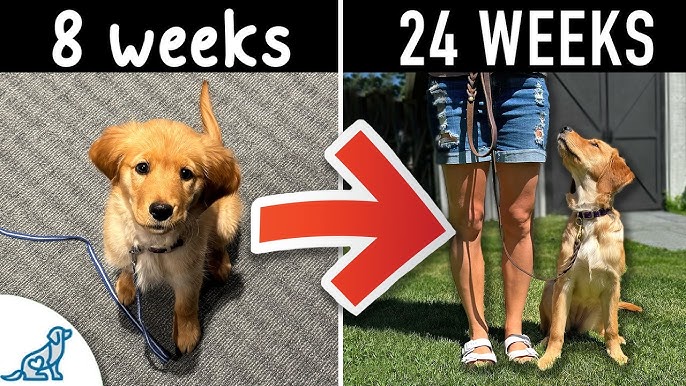
Credit: m.youtube.com
Frequently Asked Questions
How Long Does Home Dog Obedience Training Take?
Home dog obedience training usually takes 4 to 8 weeks. Consistency and daily practice speed up the learning process. Each dog learns at its own pace, so patience is key.
What Are The Basic Commands To Teach First?
Start with “sit,” “stay,” “come,” and “leave it. ” These commands build a strong foundation for further training. Use positive reinforcement and short sessions for better results.
How Can I Prevent Distractions During Training?
Train in a quiet, familiar environment initially. Gradually introduce distractions as your dog improves. Consistent practice and rewards keep your dog focused and motivated.
Is Positive Reinforcement Necessary For Obedience Training?
Yes, positive reinforcement encourages good behavior effectively. It builds trust and makes training enjoyable for your dog. Use treats, praise, and affection to reward success.
Conclusion
Training your dog at home builds trust and good behavior. Keep sessions short and fun to hold your dog’s attention. Use clear commands and reward your dog for good actions. Patience and consistency help your dog learn faster. Practice daily to make obedience a habit.
Remember, training strengthens your bond and keeps your dog safe. Enjoy the process and celebrate small wins together. Your efforts will lead to a happy, well-behaved dog at home.

